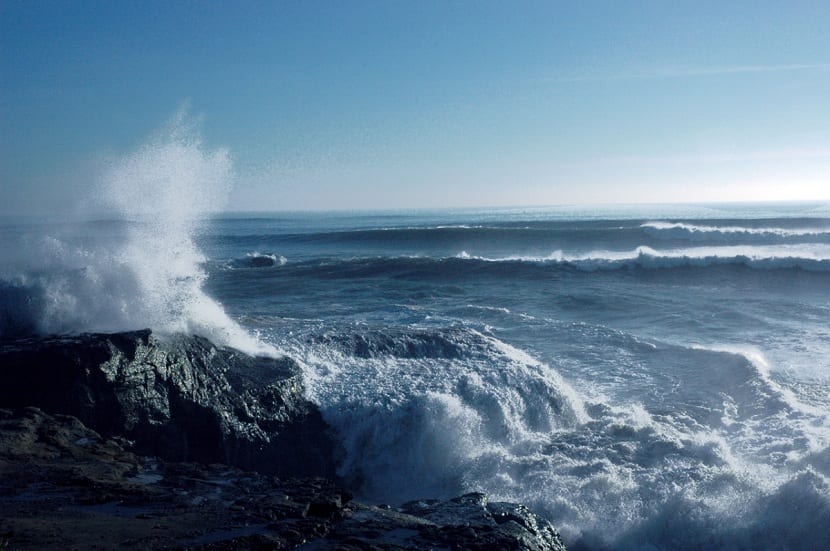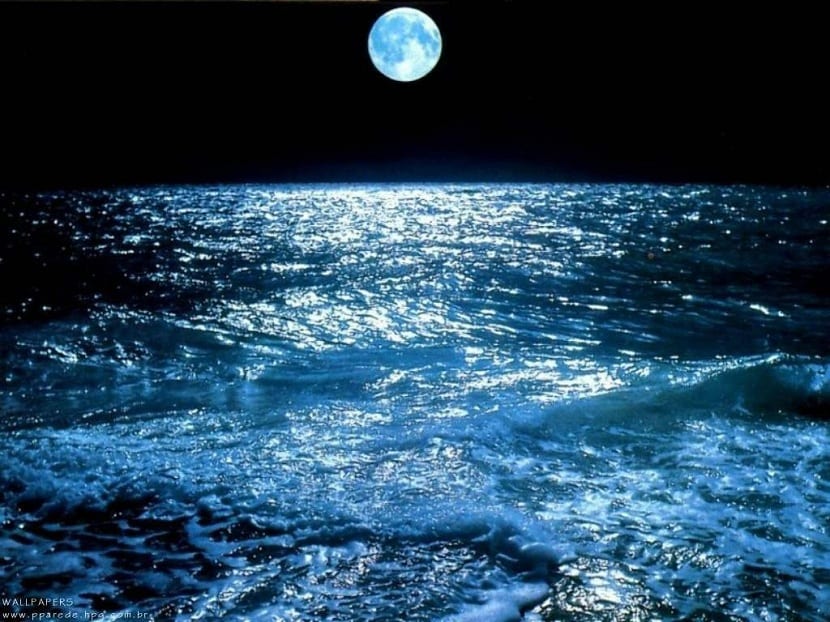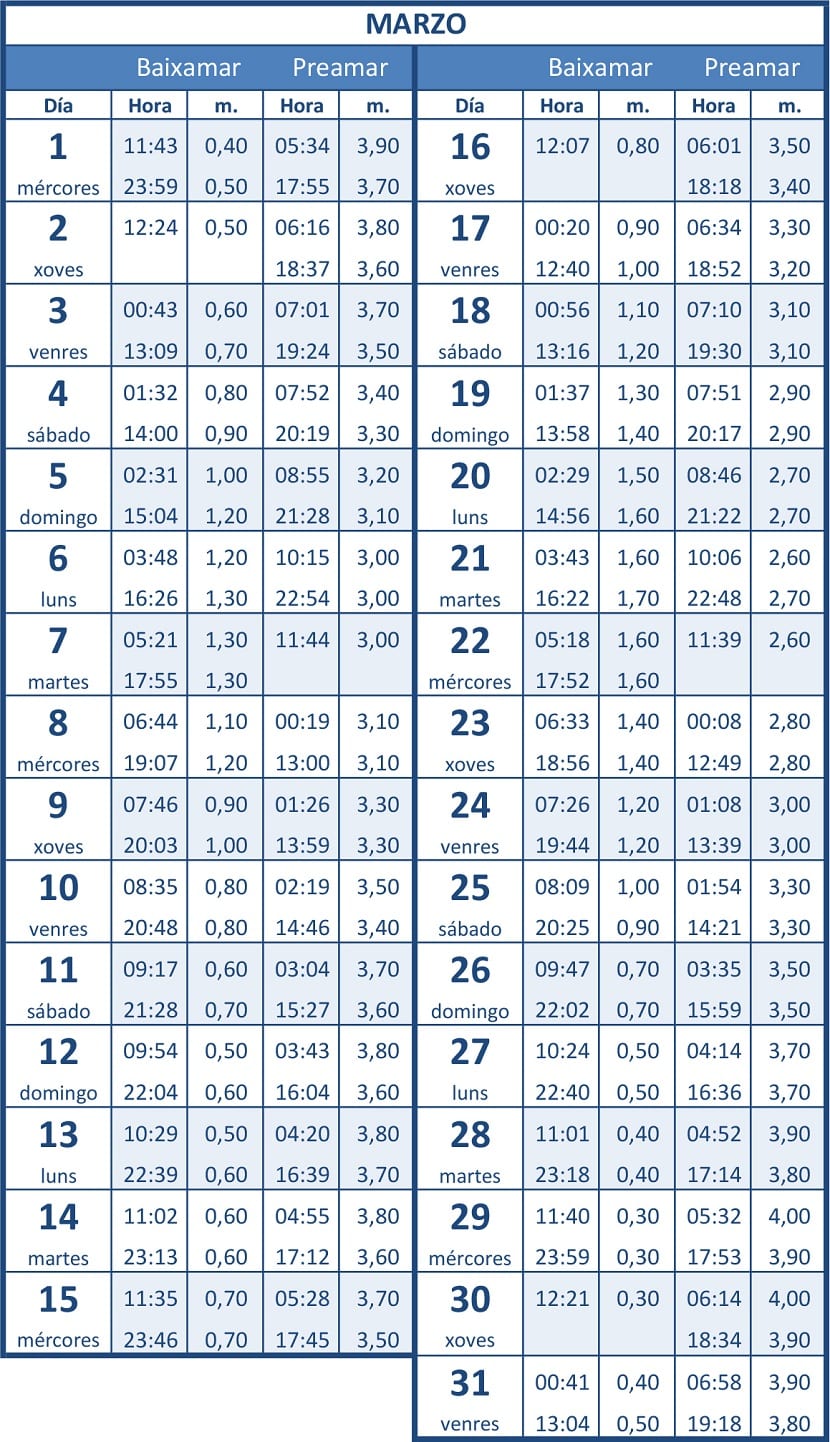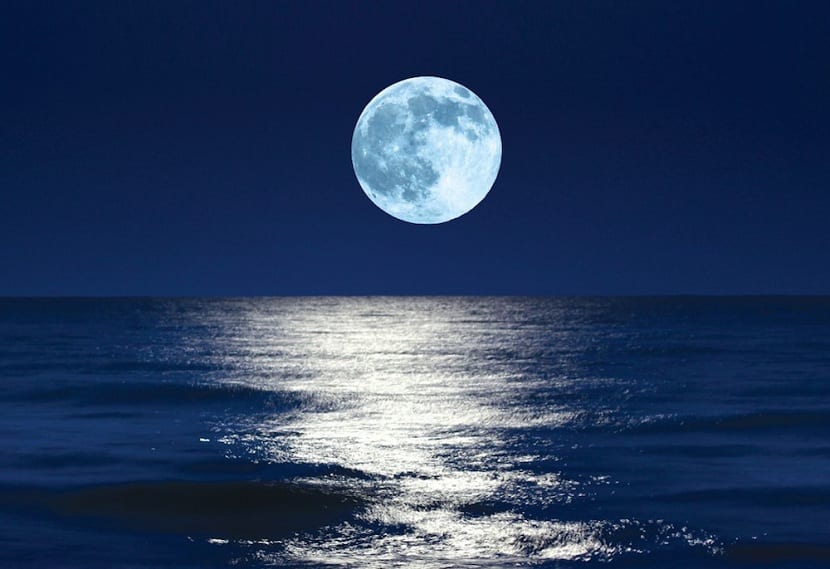
All or almost all have heard of the tides on the beaches. It is a phenomenon that acts periodically and is capable of moving large masses of water in or out of the coast. The force that exerts such movement of water masses is the gravitational action of the moon and the Sun on the earth's surface. The moon is the satellite that exerts the most force on these tides and is combined by the attraction of the Sun, whose mass is much greater.
In this article we are going to explain how the tides are formed and what they depend on. In addition, we will talk about what are tide tables and their usefulness in sport fishing. Do you want to know more about it?
How do they work

Both the action that the moon exerts on the Earth combined with the Sun, we must add the effects that the movements of the earth such as those of rotation and translation. The rotational movement exerts a force that we know as a centrifugal. Although many forces act in the production of this phenomenon, it is undoubtedly the moon exerts the greatest force.
Tides work cyclically. Since it takes 24 hours for the Earth to go around itself completely, it would once be fully aligned with the moon. Logic tells us how There should only be one high tide (high tide) all day. But this is not so. There are two high tides with 12-hour cycles and low tide (low tide) in between. Why is this happening and not as logic prompts?
We will explain step by step. As the Earth and the moon form a system that revolves around a center of rotation, it is the moon that attracts the waters when it is in a vertical position and, therefore, they rise. On the other side of the Earth The same will happen thanks to the centrifugal force generated by the earth's rotational movement. This high tide that takes place on the opposite side of the Earth is of less intensity.
However, on faces that are not aligned with the moon, the opposite occurs. The gravitational and centrifugal forces counteract each other and result in low tide.
Tidal cycle

We have to think about the movement of the Earth in order to understand this cycle well. By rotating on its own axis of rotation, the moon also rotates around the Earth in translation. It takes about 29 days to complete its orbit. This fact is what means that the Earth is not exactly aligned with the moon every 24 hours, but rather takes a little longer (more or less 50 minutes). This fact is called the lunar day and it is what marks the tidal cycle.
Therefore, the complete cycle between high tide and high tide is 12 hours, while the high and low tide is 6 hours. This is not always so accurate, since our planet is not only made up of water. There is a land surface with irregularities that influence the tides. It also affects the geometry of the coasts, the depth profile of the coastal zones, the Ocean currents, the wind that makes at that moment and the latitude in which we are. Sometimes atmospheric pressure also plays a role.
Types and table of tides

As we have talked about, it is the attraction of the moon that exerts the greatest force on the waters. But there are several types of tides. On the one hand, we have the spring tides. It is a more pronounced type of high and low tide that occurs when the moon and the Sun are aligned on Earth. Is then when both forces pull the waters with greater amplitude and more pronounced high and low tides are formed.
The reverse is also true. When the Sun and the moon are at a right angle, the attractive forces are smaller, so the action of gravity is minimal. It is at these times when the tides are smaller and are called neap tides. If some of the variables that affect the tides mentioned above are of great value, the storm surge.
The tide tables They are compilations of the hours of high and low tide. They are very useful for planning sport fishing. Thanks to these tables you can know at which time these high and low tides will take place. In addition, the activity of the fish is estimated to increase or not the probability of obtaining catches.
Here is an example of a tide table:

Are there tides in the Mediterranean Sea?

Compared to other seas and oceans, high and low tides are hardly appreciated in the Mediterranean Sea. This is because it is a practically closed sea. It's just the opening of the Strait of Gibraltar where there is an exchange of water masses with the Atlantic Ocean.
The strait acts as a kind of tap that closes the flow of water and does not allow the tides to occur in such a pronounced way. By having to pass such a volume of water in such a narrow passage, what causes is that there are strong marine currents but they are not fast enough to alter the water levels too much in what lasts the cycles.
During the emptying part, the opposite occurs. There is a fairly strong outflow current that heads towards the Atlantic. Therefore, since the Mediterranean is a fairly small and closed sea, although the tides are noticed at the level of the coast so that they rise or fall centimeters, it hardly alters navigation. It is true that whoever is on the shore of the beach will notice the change throughout the day. But beyond that, it doesn't matter.
I hope that with this information you can learn more about what tides are and how they work.